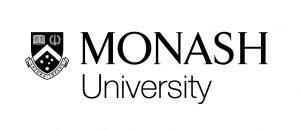
Posted: 19 September 2023
A preclinical study led by Monash University has discovered a drug combination with the potential to treat one of the most fatal and globally widespread cancers, a type of primary liver cancer called hepatocellular carcinoma (HCC).
The team of researchers from the Monash Institute of Pharmaceutical Sciences (MIPS) found the drug combination reverses the symptoms of nonalcoholic steatohepatitis (NASH) and, subsequently, markedly reduces the onset of NASH-driven HCC, without affecting the liver in mice.
The study, published in Science Advances, used a mouse model that mimics human NASH-driven HCC to implement a combination treatment of an endoplasmic reticulum (ER) stress inhibitor called ‘BGP-15’ with the inflammation blocker, ‘Olamkicept’.
Both of these drugs are already proven to be safe in humans and have progressed to Phase 2 and 3 human clinical trials for other metabolic and/or inflammatory diseases.
The study’s lead author, Professor Mark Febbraio from MIPS, said this is an exciting discovery for a particularly widespread and devastating disease with a low survival rate.
“HCC is increasing at an alarming rate largely due to increased obesity and type 2 diabetes which may lead to NASH, a well known HCC risk factor,” said Professor Febbraio.
The rise in HCC coincides with patients presenting with obesity and symptoms associated with the metabolic syndrome, especially metabolic dysfunction-associated fatty liver disease (MAFLD). Globally, a staggering 25 per cent of the population are estimated to be living with MAFLD, with around 15 per cent of those exhibiting signs of NASH.
“Despite the high prevalence of NASH and the alarming rise in NASH-driven HCC, there are currently no FDA approved treatments that halt disease progression.
“Given that ER stress and inflammation are hallmarks of NASH-driven HCC, and that BGP-15 and Olamkicept have both already proven to be safe, we tested whether these drugs – as monotherapy, or in combination – would prevent NASH and/or NASH driven HCC in mice.
“Consistent with our hypothesis, the study shows that while monotherapy with either of the two drugs modestly slowed progression, when combined they have shown to be a realistic therapeutic strategy for treating human NASH and progression to HCC, diseases that are rapidly growing with a clinical unmet need.”
Professor Febbraio said that given the significance of the discovery, combined with the urgent need for new safe and effective treatments for NASH and NASH-driven HCC, the team ultimately hope their findings will progress toward clinical trials.
“We have to stress that this study was performed in mice, not humans. However, as both drugs have been shown to be safe in several human clinical trials, the logical next step is testing the BGP-15/Olamkicept combination in clinical trials for patients with NASH and or HCC.”
The study was conducted in collaboration with The Garvan Institute of Medical Research; The Salk Institute of Biological Studies based in California; the Faculty of Veterinary Science, University of Sydney; the Baker Heart and Diabetes Institute; the Harry Perkins Institute of Medical Research, QEII Medical Centre and Centre for Medical Research, The University of Western Australia; Curtin Medical School, Curtin Health Innovation Research Institute, Curtin University; Department of Biochemistry, Christian-Albrechts-Universität zu Kiel, based in Germany and the Department of Pharmacology, University of California San Diego, La Jolla, based in California.



